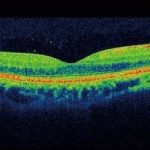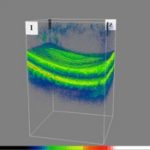 Flashes & floaters Spots or floaters are small, semi-transparent or cloudy particles within the vitreous, (which is the clear, jelly-like fluid that fills the inside of your eyes). They are quite common especially as you get older and usually, but not always, harmless. Appearing as specks, threadlike strands or cobwebs, floaters are most visible when you look at a light background, such as the sky or a white surface. Spots and floaters are caused by- • Deterioration of the vitreous fluid, which …. Read More …..
Flashes & floaters Spots or floaters are small, semi-transparent or cloudy particles within the vitreous, (which is the clear, jelly-like fluid that fills the inside of your eyes). They are quite common especially as you get older and usually, but not always, harmless. Appearing as specks, threadlike strands or cobwebs, floaters are most visible when you look at a light background, such as the sky or a white surface. Spots and floaters are caused by- • Deterioration of the vitreous fluid, which …. Read More …..
 3D OCT eye Scan The health of your eyes matters to you. It matters to us too, which is why we have introduced a new service to detect a variety of eye conditions much earlier than has been possible before. Using a state-of-the-art 3D Optical Coherence Tomography (OCT) eye scanner we can take both a full-colour digital photograph and a 3 dimensional (3D) scan of the back of your eyes. This allows us to detect a number of common sight-threatening eye conditions that affect the retina and optic nerve. Early... Read more...
3D OCT eye Scan The health of your eyes matters to you. It matters to us too, which is why we have introduced a new service to detect a variety of eye conditions much earlier than has been possible before. Using a state-of-the-art 3D Optical Coherence Tomography (OCT) eye scanner we can take both a full-colour digital photograph and a 3 dimensional (3D) scan of the back of your eyes. This allows us to detect a number of common sight-threatening eye conditions that affect the retina and optic nerve. Early... Read more... Cataract A cataract is NOT a skin growing over the front of the eye. It is, in fact, a clouding of the eye’s natural lens, which lies behind the iris and the pupil. The lens works much like a camera lens, focusing light onto the retina at the back of the eye. The lens also adjusts the eye’s focus, letting us see things clearly both up close and far away. The lens is mostly made of water and protein. The protein is arranged in a precise way that keeps the lens clear and lets light pass through it. As we… Read more…
Cataract A cataract is NOT a skin growing over the front of the eye. It is, in fact, a clouding of the eye’s natural lens, which lies behind the iris and the pupil. The lens works much like a camera lens, focusing light onto the retina at the back of the eye. The lens also adjusts the eye’s focus, letting us see things clearly both up close and far away. The lens is mostly made of water and protein. The protein is arranged in a precise way that keeps the lens clear and lets light pass through it. As we… Read more…
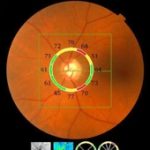 Glaucoma What is glaucoma? Glaucoma is the name for a group of eye conditions in which the optic nerve is damaged at the point where it leaves the back of the eye. This nerve carries information from the light-sensitive layer in your eye, the retina, to the brain where it is perceived as a picture. Your eye needs a certain amount of pressure to keep the eyeball in shape so that it can work properly. In some people, damage to the optic nerve is caused by abnormally high eye pressure. Some people may… Read more...
Glaucoma What is glaucoma? Glaucoma is the name for a group of eye conditions in which the optic nerve is damaged at the point where it leaves the back of the eye. This nerve carries information from the light-sensitive layer in your eye, the retina, to the brain where it is perceived as a picture. Your eye needs a certain amount of pressure to keep the eyeball in shape so that it can work properly. In some people, damage to the optic nerve is caused by abnormally high eye pressure. Some people may… Read more...
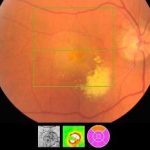 Age-Related Macular Degeneration (AMD) What is age-related macular degeneration? Age-related macula degeneration (ARMD or AMD) is when the delicate cells of the macula become damaged and stop working. We do not know why this is, although it tends to happen as people get older. Macular degeneration usually involves both eyes, although they may not be affected at the same time or to the same extent. AMD is the leading cause of vision loss and blindness among the over 65 population in the UK. Because people in this group are an… Read more…
Age-Related Macular Degeneration (AMD) What is age-related macular degeneration? Age-related macula degeneration (ARMD or AMD) is when the delicate cells of the macula become damaged and stop working. We do not know why this is, although it tends to happen as people get older. Macular degeneration usually involves both eyes, although they may not be affected at the same time or to the same extent. AMD is the leading cause of vision loss and blindness among the over 65 population in the UK. Because people in this group are an… Read more…
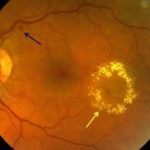 Diabetic Retinopathy What is diabetic retinopathy? Diabetes mellitus or ‘sugar diabetes’ affects about one person in fifty in the UK. This means that the body cannot cope normally with sugar and other carbohydrates in the diet. Diabetes can start in childhood, but more often it begins later in life. It can cause complications, which affect many different parts of the body. There are two types of diabetes mellitus – Type 1 is controlled by insulin injections and Type 2 by diet or tablets. Both Type 1 & 2 can affect the… Read more…
Diabetic Retinopathy What is diabetic retinopathy? Diabetes mellitus or ‘sugar diabetes’ affects about one person in fifty in the UK. This means that the body cannot cope normally with sugar and other carbohydrates in the diet. Diabetes can start in childhood, but more often it begins later in life. It can cause complications, which affect many different parts of the body. There are two types of diabetes mellitus – Type 1 is controlled by insulin injections and Type 2 by diet or tablets. Both Type 1 & 2 can affect the… Read more…

